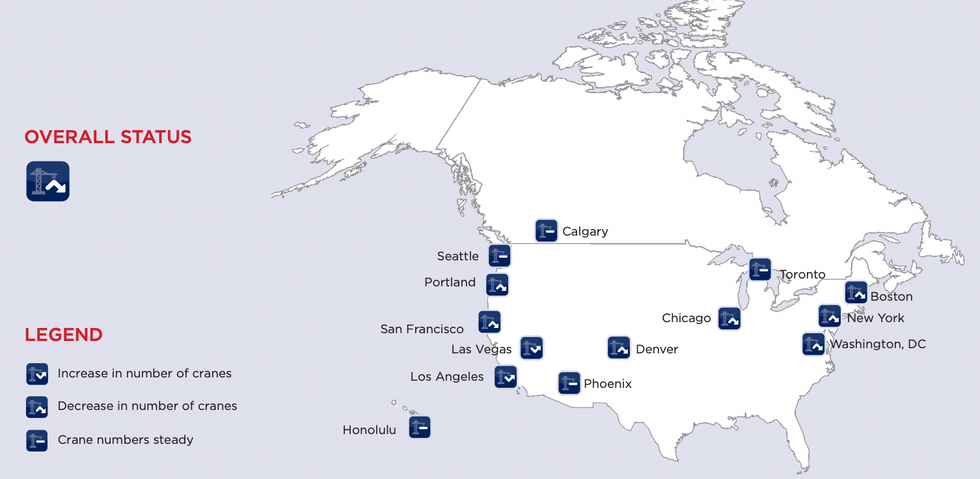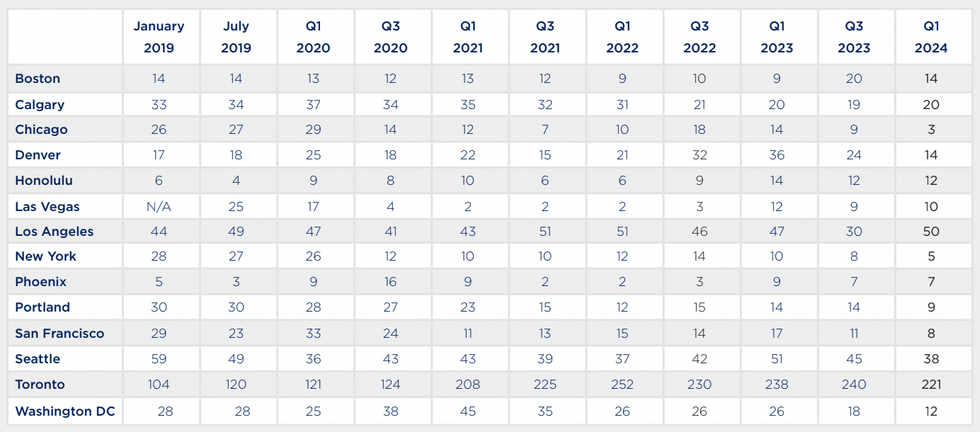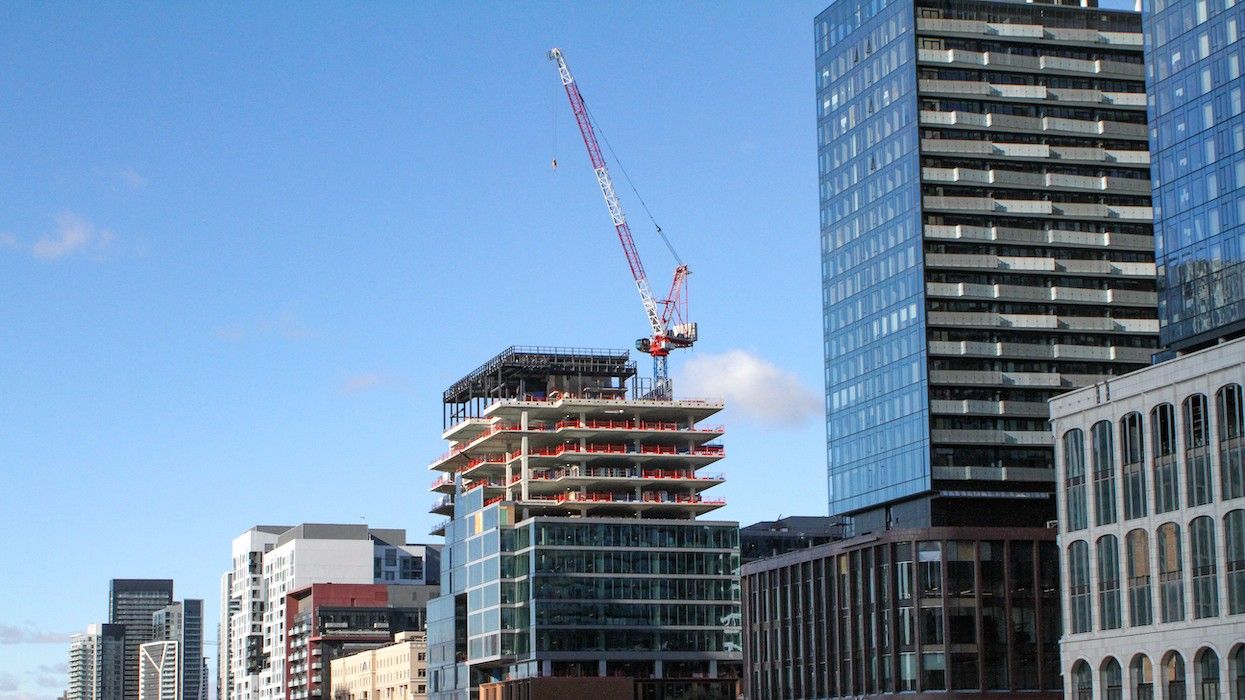Although you still can’t go a block in Toronto without encountering a crane or two (or five… so watch where you’re walking, for heaven’s sake!), it turns out the city has lost some footing in the crane game.
Rider Levett Bucknall (RLB) released its latest Crane Index on Tuesday, and it shows that Toronto lost 19 operating tower cranes between the third quarter of 2023 and the first quarter of 2024.
That's not to say Toronto is lacking in the crane department; the city still had 221 cranes at last count, well outpacing 13 other major markets across the US and Canada (including runner-up Los Angeles, where there were some 50 cranes documented).
Even so, this latest index is something of an outlier, as far as Toronto is concerned. The number of cranes dotting Toronto’s skyline has been climbing fairly steadily since the first quarter of 2021, when there were 208 cranes documented.
According to RLB Associate Taryn Harbert, who authored the company’s biannual index, the 8% hit that Toronto has taken to its crane count has translated, as of the first quarter, into the lowest number of cranes the city’s had since 2022, and can be chalked up to a “slowdown in overall construction activity.”

“With multiple commercial building projects ending, the commercial sector saw the most significant drop, with a reduction of ten cranes, and the hospitality sector decreased by five,” Harbert wrote. “Contrary to those declines, the residential sector continues to grow, with residential and mixed-use projects continuing to dominate the crane count, accounting for over 80% of the total cranes.”
Harbert additionally noted that, beginning in the third quarter of this year, RLB will report on an “altered survey area” for Toronto specifically.
“We will be implementing a revised radius for crane counting, prioritizing the downtown core area, which has the highest density of construction projects,” she explained. “The revised radius is 3.5 km from the Bloor Street West and Avenue Road centre. As of Q1 2024, this core area contributes to approximately 35% of the overall Toronto crane count (80 cranes).”

Zooming out a little: RLB reported on Tuesday that the crane count across all 14 cities included in the index decreased 9% (or by 43 cranes) between the third quarter of 2023 and the first quarter of 2024. In fact, the only two cities to see their crane counts edge meaningfully upwards were Los Angeles and Las Vegas. However, a number of token projects are underway in both of those cities, including the complete overhaul of the Los Angeles County Museum of Art (in Los Angeles) and the construction of a $1.5B Major League Baseball stadium (in Las Vegas).
The only other Canadian city included in RLB’s index is Calgary, where the crane count was more or less stagnant as of the first quarter (with around 20 cranes documented). The lion’s share of cranes in the westerly city are being used for residential projects, Harbert also noted.
“Despite the continued downturn in cranes, we remain cautiously optimistic,” continued Harbert, speaking to the North American crane scene on the whole. “Ongoing investment in manufacturing and infrastructure will help offset any decline in privately funded projects in 2024. Overall, construction spending will be driven by public funding for manufacturing and infrastructure projects.”





















